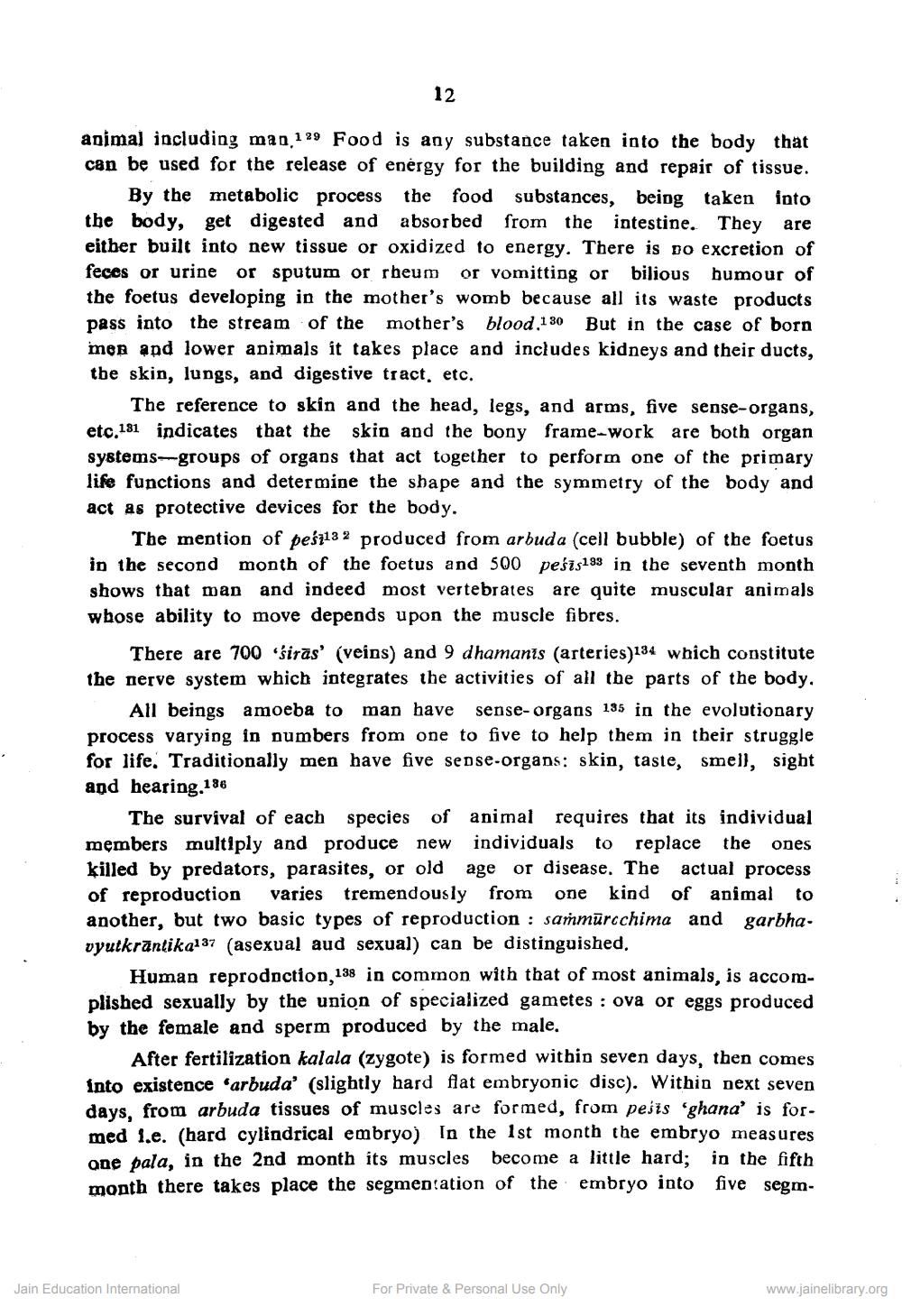________________
12
animal including man,129 Food is any substance taken into the body that can be used for the release of energy for the building and repair of tissue.
By the metabolic process the food substances, being taken into the body, get digested and absorbed from the intestine. They are either built into new tissue or oxidized to energy. There is no excretion of feces or urine or sputum or rheum or vomitting or bilious humour of the foetus developing in the mother's womb because all its waste products pass into the stream of the mother's blood.130 But in the case of born mer and lower animals it takes place and includes kidneys and their ducts, the skin, lungs, and digestive tract, etc.
The reference to skin and the head, legs, and arms, five sense-organs, etc.131 indicates that the skin and the bony frame-work are both organ systems-groups of organs that act together to perform one of the primary like functions and determine the shape and the symmetry of the body and act as protective devices for the body.
The mention of peś7132 produced from arbuda (cell bubble) of the foetus in the second month of the foetus and 500 peśīs193 in the seventh month shows that man and indeed most vertebrates are quite muscular animals whose ability to move depends upon the muscle fibres.
There are 700 siras' (veins) and 9 dhamanis (arteries)134 which constitute the nerve system which integrates the activities of all the parts of the body,
All beings amoeba to man have sense-organs 135 in the evolutionary process varying in numbers from one to five to help them in their struggle for life. Traditionally men have five sepse-organs: skin, taste, smell, sight and hearing.186
The survival of each species of animal requires that its individual members multiply and produce new individuals to replace the ones killed by predators, parasites, or old age or disease. The actual process of reproduction varies tremendously from one kind of animal to another, but two basic types of reproduction : sammūrochima and garbha. vyutkrāntika137 (asexual aud sexual) can be distinguished.
Human reprodnction, 138 in common with that of most animals, is accomplished sexually by the union of specialized gametes: ova or eggs produced by the female and sperm produced by the male.
After fertilization kalala (zygote) is formed within seven days, then comes into existence ‘arbuda' (slightly hard flat embryonic disc). Within next seven days, from arbuda tissues of muscles are formed, from pesis ‘ghana' is formed 1.e. (hard cylindrical embryo) In the 1st month the embryo measures one pala, in the 2nd month its muscles become a little hard; in the fifth month there takes place the segmentation of the embryo into five segm
Jain Education International
For Private & Personal Use Only
www.jainelibrary.org




